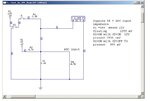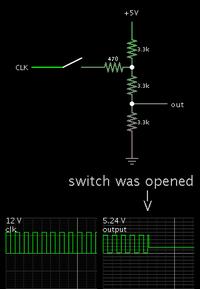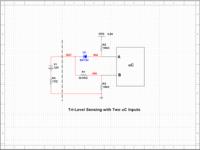whsdet
Newbie level 4
Hi everyone!
I want to detect if a signal is a logic '1' (12V) or a logic '0' (0V) on the same input pin of a PIC microcontroller.
My initial idea was to scale down the voltage using an non-inverting op-amp and then use the on-board ADC to sample the signal to see if the signal is high or low. However, the signal is not always high or low, it will be floating or high-Z most of the time.
Does anyone have a better/more simple idea?
Thanks!
Ted
I want to detect if a signal is a logic '1' (12V) or a logic '0' (0V) on the same input pin of a PIC microcontroller.
My initial idea was to scale down the voltage using an non-inverting op-amp and then use the on-board ADC to sample the signal to see if the signal is high or low. However, the signal is not always high or low, it will be floating or high-Z most of the time.
Does anyone have a better/more simple idea?
Thanks!
Ted


